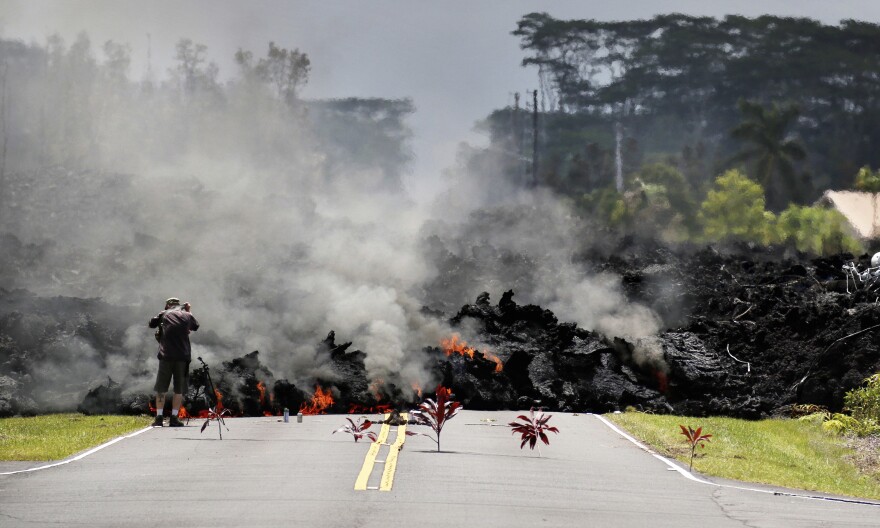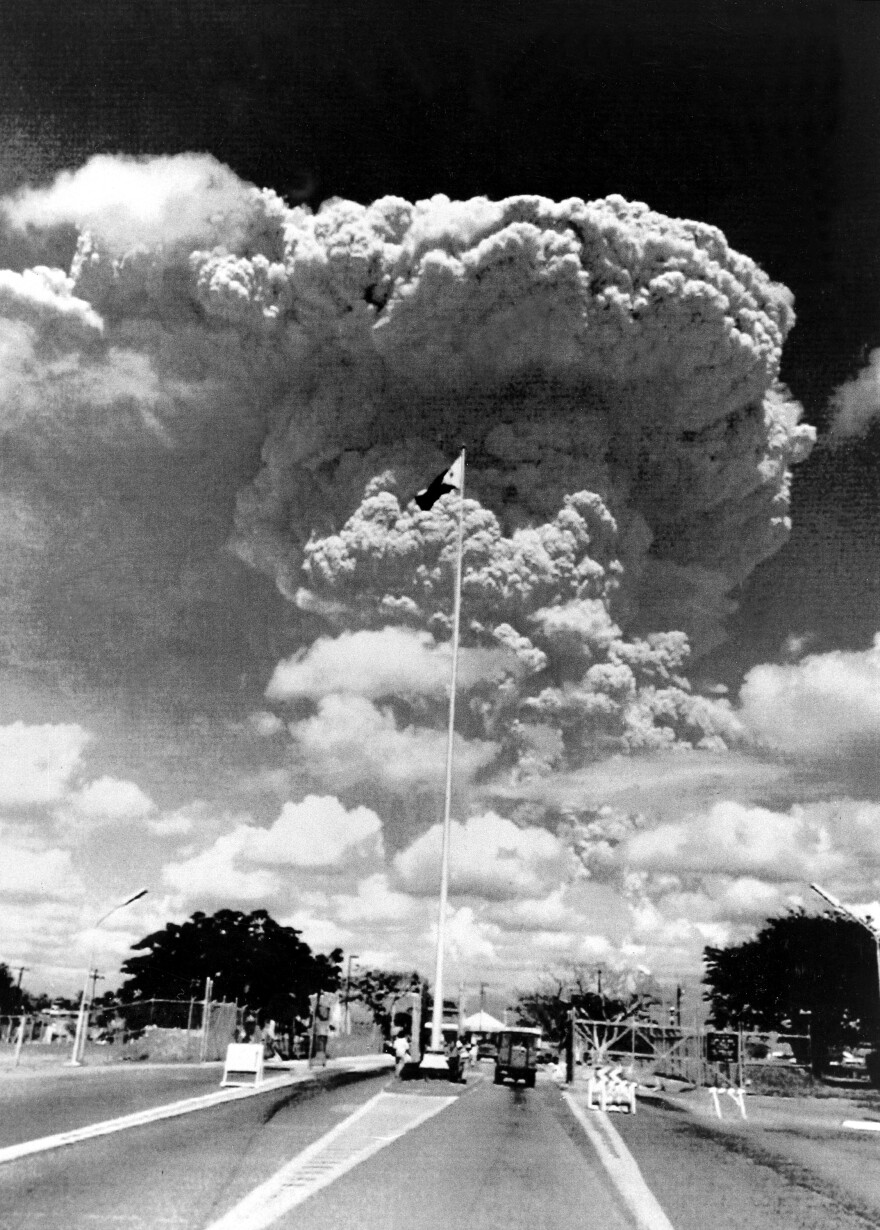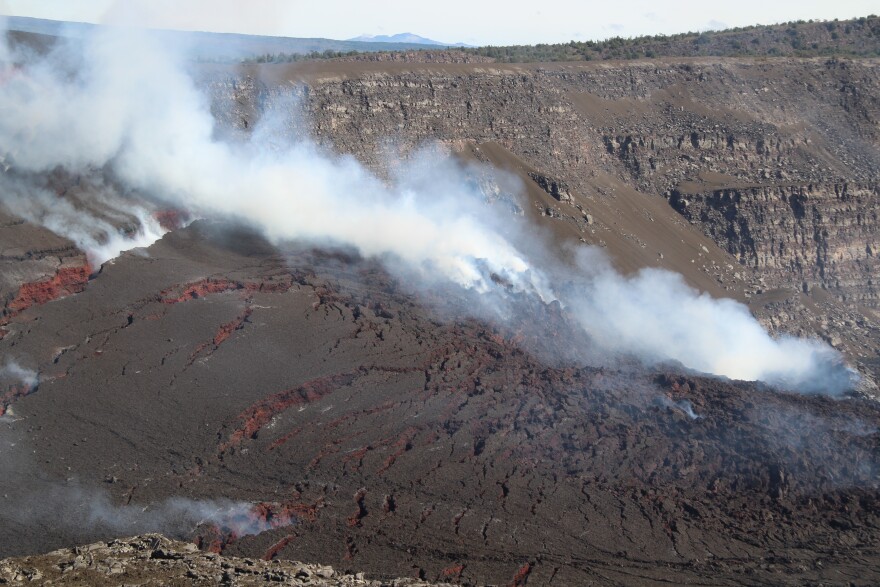Kīlauea briefly erupted again on Sunday, pouring close to 2 billion gallons of lava across the floor of Halemaʻumaʻu crater. But lava isn't the only thing that spews out of a volcano during an eruption.
Kīlauea also pumps out thousands of tons of volcanic gases, namely water vapor, sulfur dioxide, and carbon dioxide.
The emissions often don't get as much attention as lava, but they can affect our health, infrastructure, and even the climate.
For instance, sulfur dioxide is the culprit behind a phenomenon Hawaiʻi Island residents are all too familiar with — vog.
Vog can cause breathing issues and irritation of the eyes, nose and throat. A recent study suggested that vog exposure may be associated with lower student test scores.
"The more exposure you have to the vog, the more of a problem it is," said Patricia Nadeau, a research geologist with the Hawaiian Volcano Observatory.
The sulfur dioxide in vog can also combine with moisture in the atmosphere to create acid rain, which can damage plant life and even corrode metal.

During the 2018 Kīlauea flows, Hawaiʻi Island farmers reported that acid rain was burning off the leaves of crops like orchids and papaya.
At the time, Kīlauea was emitting upwards of 100,000 tons of sulfur dioxide a day. Kīlauea's recent eruptive episodes have produced sulfur dioxide emissions in the range of 50,000 to 100,000 tons a day, according to Nadeau.
The other gas in the mix is carbon dioxide, a potent greenhouse gas linked to global warming.
The ratio of sulfur dioxide to carbon dioxide in Kīlauea’s plume is about 3:1, meaning that Kīlauea may have emitted around 15,000 to 30,000 tons of carbon dioxide during its recent active phases.
How do volcanic emissions compare to human emissions?
Christoph Kern, a U.S. Geological Survey research physicist specializing in volcanic gas emissions, estimated that volcanism contributes an average of about 200 million to 400 million tons of carbon dioxide into the atmosphere each year.
Although that amount is substantial, Kern noted that carbon dioxide emissions from human activity are about 100 times higher than those of every volcano on Earth combined.
"Today, humans are mostly responsible for the CO2 that's being added to the atmosphere," he said.
There have been specific instances in which volcanic carbon dioxide emission rates have briefly matched that of human activity.
During a massive eruption in 1991, Mount Pinatubo in the Philippines pumped 50 million tons of CO2 into the atmosphere over the course of just nine hours.

"But luckily, we don't have eruptions like that continuously and, in fact, haven't had one of that size since," Kern said.
The climate impact of such eruptions is complex. Mount Pinatubo emitted a significant amount of carbon dioxide in a short period, but in the aftermath of the eruption, global temperatures were cooler by about 1 degree Fahrenheit for two years.
Scientists believe temperatures dropped because the eruption propelled sulfur dioxide high enough into the atmosphere that it converted into sulfate aerosols, which reflect radiation from the sun.
These cooling effects are short-lived and only produced by the most explosive eruptions.
Kīlauea's sulfur dioxide emissions may have consequences for local communities, but they aren't going to cause a global chill.
Hawaiʻi Public Radio exists to serve all of Hawai’i, and it’s the people of Hawai’i who keep us independent and strong. Help keep us strong to serve you in the future. Donate today.




